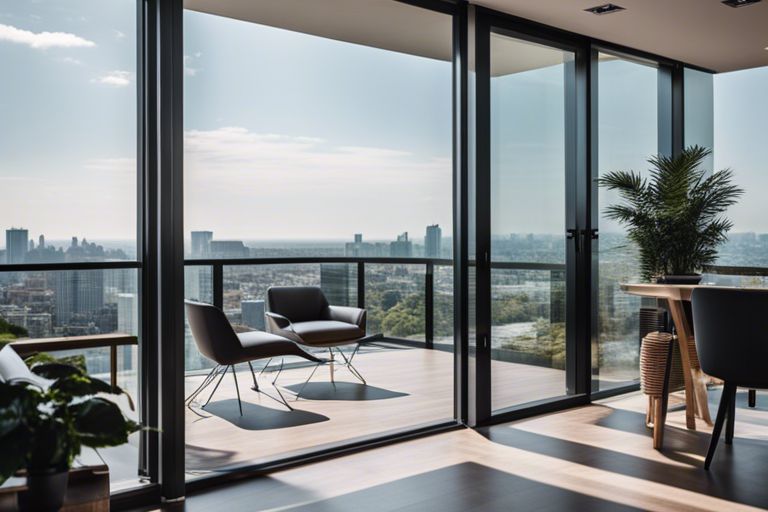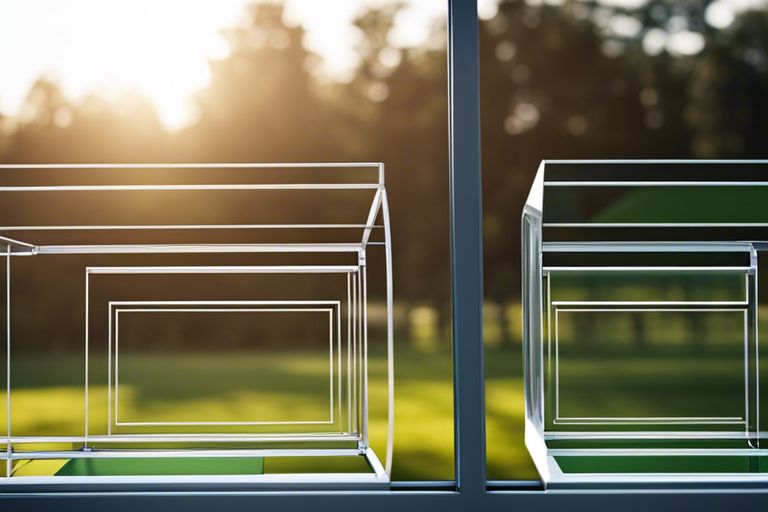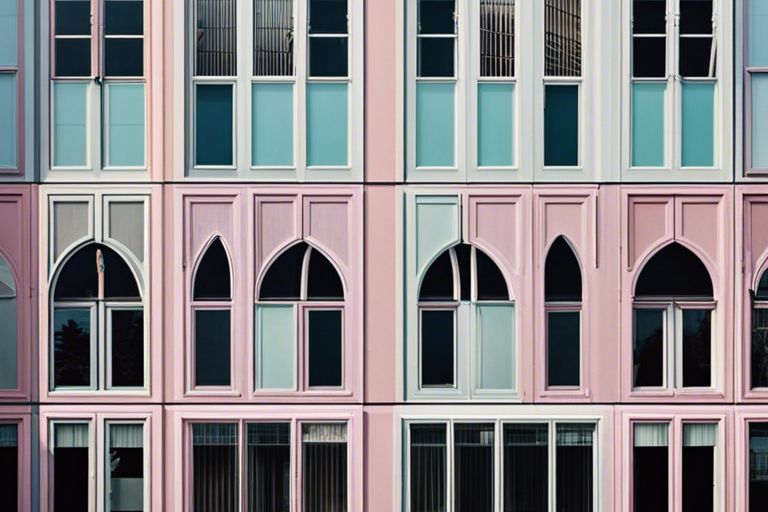When we think of medieval castles, one of the most iconic features that come to mind is the curtain wall. These towering walls were not just architectural marvels but also played a crucial role in the defence and functionality of a castle. Serving as the first line of defence, curtain walls were designed to withstand sieges and attacks from enemies, protecting those inside the castle walls. They were built tall and thick, making it difficult for invaders to breach the fortress. Additionally, curtain walls provided privacy, security, and a sense of grandeur to the inhabitants of the castle. This architectural innovation revolutionised castle design and left a lasting impact on the history of medieval warfare.
Key Takeaways:
- Defensive Strategy: Curtain walls were essential in protecting castles from enemy attacks, providing a strong barrier against invaders.
- Architectural Innovation: The use of curtain walls marked a significant advancement in medieval castle design, allowing for enhanced defensive capabilities and structural stability.
- Symbol of Power: The presence of curtain walls on castles not only served a practical purpose but also reflected the wealth and authority of the castle owner, showcasing their status in society.

Evolution of Curtain Walls in Medieval Europe
Early Examples and Developments
In the early stages of medieval Europe, curtain walls began to emerge as an essential defensive structure for castles. The concept of a curtain wall, a stone wall enclosing a castle, was introduced to provide protection against enemy attacks. These walls were initially simple in design, serving the primary purpose of fortification.
As warfare tactics evolved, so did the construction of curtain walls. Embracing strategic advancements, medieval engineers started incorporating features like battlements, arrow loops, and machicolations into the design. These developments enhanced the defensive capabilities of curtain walls, making them more formidable against sieges and assaults.
Innovations in Design and Materials
During the medieval period, innovations in design and materials played a crucial role in shaping the evolution of curtain walls. Engineers experimented with various construction techniques, such as using stronger stone structures and improving the bonding of stones with mortar. This led to the creation of more robust and durable curtain walls that could withstand prolonged attacks.
Moreover, advancements in defensive tactics prompted the inclusion of strategic elements like crenellations for archers to shoot through and improved gatehouse designs to control access points more effectively. These innovations not only enhanced the defensive capabilities of castles but also influenced the architectural landscape of medieval Europe.

Strategic Importance of Curtain Walls
Curtain walls, an essential feature of medieval castle architecture, played a crucial role in the strategic defences of these formidable structures. These walls surrounded the inner wards of the castle, acting as the first line of defence against enemy attacks and intrusions.
Defense Mechanisms and Tactics
Curtain walls were built to be imposing and impenetrable, designed to withstand a variety of siege tactics. Battlements on the walls allowed defenders to station archers and soldiers, providing strategic vantage points to rain down arrows and projectiles on advancing enemies. Moreover, the sheer height and thickness of curtain walls made it exceedingly difficult for besiegers to breach them easily.
In times of siege, defenders utilised various tactical manoeuvres to maximise the effectiveness of curtain walls. Boiling oil or water could be poured from crenellations atop the walls onto assailants below, causing significant harm and deterring further attacks. Additionally, hidden passageways known as mural passages within the walls allowed defenders to move swiftly and surprise attackers, gaining the upper hand in critical moments.
Impact on Siege Warfare
The presence of curtain walls had a profound impact on siege warfare strategies throughout history. Besieging armies faced the daunting task of breaching these formidable fortifications, leading to the development of advanced siege engines such as battering rams, siege towers, and trebuchets. These siege tactics required meticulous planning and precise execution to overcome the formidable defences provided by curtain walls.
Furthermore, the construction of curtain walls necessitated besiegers to invest significant time, resources, and manpower in attempting to breach these defences. This aspect often prolonged sieges, draining the attacking forces both physically and mentally as they grappled with the formidable challenge presented by the castle’s curtain walls.
The Historical Significance of Curtain Walls on Castles
Sociopolitical Symbolism of Curtain Walls
Expression of Power and Wealth
The construction of curtain walls around castles served as a clear expression of power and wealth by medieval lords and monarchs. These towering stone walls, often reinforced with defensive features such as battlements and towers, were not only formidable obstacles for potential invaders but also impressive symbols of the ruler’s dominance over the surrounding landscape.
Furthermore, the sheer scale and grandeur of curtain walls were intended to impress and intimidate both allies and enemies alike. The vast resources required to build and maintain such structures highlighted the owner’s ability to command not only a workforce but also the financial means necessary for large-scale architectural projects.
Influence on Feudal Relationships and Territory Control
The presence of curtain walls on castles had a profound impact on feudal relationships and territory control during the medieval period. By fortifying their strongholds with these imposing structures, feudal lords were able to assert their authority over their vassals and subjects, reinforcing the hierarchical nature of the feudal system.
Moreover, the strategic placement of castles with curtain walls along key trade routes or borders demonstrated a lord’s control over important territories and strategic points. This not only enhanced the ruler’s military capabilities but also allowed them to exert their influence over the economic activities and movements of people in the region.
During times of conflict, the castle’s curtain walls provided a secure refuge for the lord and their followers, ensuring the protection of both life and valuable resources. The superiority of their defensive capabilities often deterred potential aggressors, thereby helping to maintain stability and order in the feudal domain.

Preservation and Legacy
When it comes to the preservation and legacy of curtain walls on castles, their historical significance cannot be understated. These structures have withstood the test of time, showcasing the architectural prowess of past civilisations.
Restoration Efforts of Historical Curtain Walls
Restoration efforts of historical curtain walls play a crucial role in ensuring that these iconic structures are preserved for future generations. Skilled craftsmen meticulously work to repair damaged sections, reinforce weakened areas, and recreate missing elements to maintain the integrity of the walls.
Through these restoration projects, we can continue to appreciate the grandeur and defensive capabilities of curtain walls that once protected ancient fortresses from invaders. It is essential to invest in these efforts to safeguard our rich architectural heritage for the years to come.
Curtain Walls in Modern Culture and Media
Curtain walls continue to captivate modern culture and media, making appearances in films, TV shows, and literature. Their imposing presence often symbolises strength, resilience, and a connection to the past, sparking interest and fascination among audiences worldwide.
In popular culture, curtain walls are frequently featured as integral components of medieval settings, adding an air of authenticity and historical accuracy to storytelling. Their portrayal in various forms of media helps to keep the legacy of these architectural marvels alive and relevant in today’s society.
Moreover, architects and designers draw inspiration from the intricate designs and defensive strategies of historical curtain walls to create innovative structures that echo the timeless appeal of these ancient fortifications.
The Historical Significance of Curtain Walls on Castles
Curtain walls have played a crucial role in the history of castle construction, providing essential defensive capabilities for centuries. These iconic walls were not only formidable barriers against enemies but also served as symbols of power and prestige for the noble families who inhabited them. The innovation and strategic design of curtain walls revolutionised castle fortifications, influencing military tactics and architectural developments throughout the medieval period. Their historical significance lies in their ability to shape the landscape of warfare and establish the dominance of the ruling classes in feudal society. From the iconic walls of the Tower of London to the majestic fortifications of Caernarfon Castle, curtain walls stand as a testament to the enduring legacy of medieval castle architecture.
FAQ
Q: What is the historical significance of curtain walls on castles?
A: Curtain walls on castles served as formidable defensive structures, providing protection and security against enemy attacks during medieval times. These walls were crucial in fortifying the castle complex and preventing invading armies from easily breaching the defences.
Q: How were curtain walls constructed and what materials were typically used?
A: Curtain walls were usually constructed from stone or brick, with a solid and imposing design that made them difficult to penetrate. They were built to enclose and protect the inner courtyard or keep of the castle, typically reaching significant heights to deter climbers and siege machinery.
Q: What role did curtain walls play in the overall architectural layout of a castle?
A: Curtain walls not only provided a defensive perimeter for the castle but also contributed to the grandeur and imposing presence of the structure. They were often adorned with battlements, arrow loops, and machicolations, adding to the castle’s architectural beauty while serving practical military purposes.






